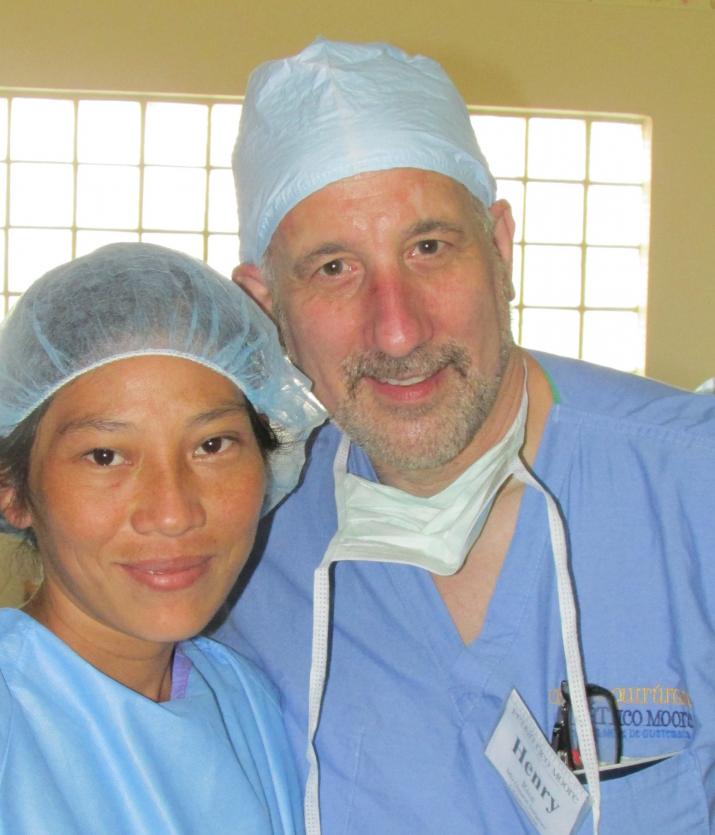Evaluation of Barriers to Surgical Care for Children in Guatemala

Faculty:
Countries:
Sponsors:
- Duke University
Collaborators:
- Moore Pediatric Surgical Center
Start Date:
End Date:
-
Completed
Evaluation of Barriers to Surgical Care for Children in Guatemala
The Duke Pediatric Surgery/Urology Guatemala Project, which has been active since 2010, is a collaboration between Duke University, Guatemalan partners, and non-government organizations (NGOs). The goal of the project is to support clinical care, research, and education initiatives for pediatric surgical care in Guatemala, consistent with the principles of the Duke Global Health Institute. Our work is based at the Moore Pediatric Surgical Center in Guatemala City, and is supported by two NGOs, Mending Kids International and The Shalom Foundation. Our activities following several lines: * Service: Provide high-quality care in partnership with local health providers and health systems * Learning: Perform and teach safe surgical practice in collaboration with local providers * Education: Work with local health providers on shared educational opportunities * Development: Build partnerships with local medical school and health systems * Research: Identify specific impact areas for shared research and education collaborations * Team building: Provide Duke employees with an engagement with global health programs
Over the past year, we have directed several research projects in surgery, urology, and anesthesia as well as in areas of operating room systems and patient safety. Many of our trainees participated in these research efforts. 1. This year's major area of research focused on the study of barriers to surgical care for children in Guatemala, and was directed by Dr. Ben Silverberg, a DGHI Master's student in Global Health. Dr. Silverberg's project used qualitative anthropologic research methods based on structured interviews and content analysis to identify important themes in regards to barriers to care. His findings included that overwhelming financial challenges for families, a limited understanding of medical options, and poor communication between health care staff and families were most important for these families. We also extended our quantitative assessment of surgical barriers by surveying families for self-reported barriers to surgery. We used a ranking method to measure which barriers were considered most important to families. We found that there was a large delay in seeking surgical care, with a mean duration of symptoms of 2 years before accessing care. Most families lived > 50 km from the clinic. Of the barriers to surgery, costs and quality of care at available hospitals were the most frequently cited, suggesting that targeted interventions towards these barriers may be of value. 2. We performed a number of affiliated projects in anesthesiology overseen by Dr. Brad Taicher, Department of Anesthesia, Duke University. These studies assessed the effectiveness of regional anesthetics in an environment where opioid analgesics are not easily accessible. We performed regional anesthetics on 43 patients (21 caudal epidural blocks, 17 ultrasound-guided ilioinguinal-iliohypogastric blocks, 4 TAP blocks and 1 scalp block). The patients' ages ranged from 5 months to 17 years old. The caudal epidurals had a 95% success rate as assessed by a lack of response to incision and need for supplemental intra-operative analgesia. The ilioinguinal-iliohypogastric, TAP, and scalp blocks had a 100% success rate as assessed by visualization of local anesthetic deposition via ultrasound, and by confirmation from the patients of post-operative loss of temperature sensation in the ipsilateral region. None of these patients required narcotics during their overnight stay, and no complications were identified. Although limited in size, our data suggests that regional anesthetics can be a beneficial adjunct for pediatric surgery in this environment. 3. We assessed the quality and accuracy of patient checklist in this setting by measuring the accuracy of all steps of a Duke "blue hat" procedure. This procedure is used in the preoperative holding area to confirm proper patient identification, type and side of procedure, and essential medical information. We were able to identify vulnerable parts of the system in place at the Moore Center and prevent any incorrect procedures. 4. We assessed the differences between subjective and objective pain scoring systems in the PACU to determine whether cultural stoicism can impact administration of pain medicines. We are comparing this data to baseline data at Duke Children's Hospital and the data collection there is still under way. 5. We trained 7 perioperative nurses and technicians with no prior experience in endotracheal intubation with a novel technique to intubate children without understanding the anatomy of the airway (6/7 were successful on their first attempt). We intend to expand use of this technique to help cross-train personnel in resource constrained environments to be able to assist their anesthesia team.
Last updated on June 3, 2020